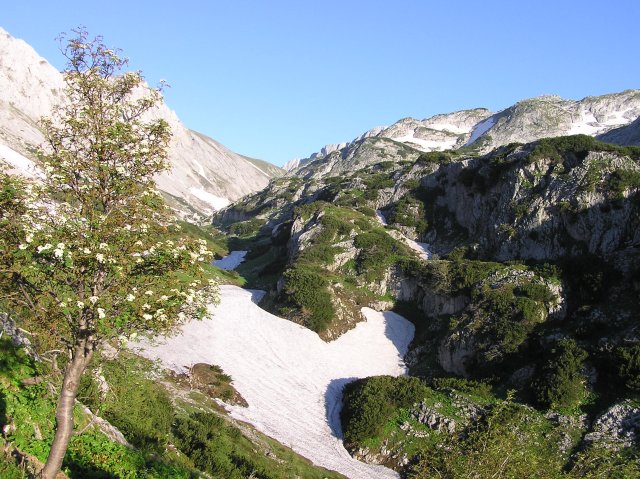
Hochschwab crossing: 2. Day 24.6.2005
Today we start at 8 a.m.: first through the valley heading for Hochschwab summit, then steep ascent to the right to Schiestlhaus. After a short break we walk further to Hochschwab summit (2.277 m). After a longer summit rest we decend via Rauchtalsattel, cross by under the summit of Hochwart (2.210 m) and over mountain grassland, at least through lots of mountain pines and snow filled gullies to Haeuselalm. After a short meal we continue via Sackwiesenalm and the gorgeous Sackwiesen tarn to Sonnschienhuette (1.540 m), the second lodge to sleep; 10 hours including all breaks. Bright weather all day and stunning views from the summit.

In the morning at 6 a.m.: View further into the valley...
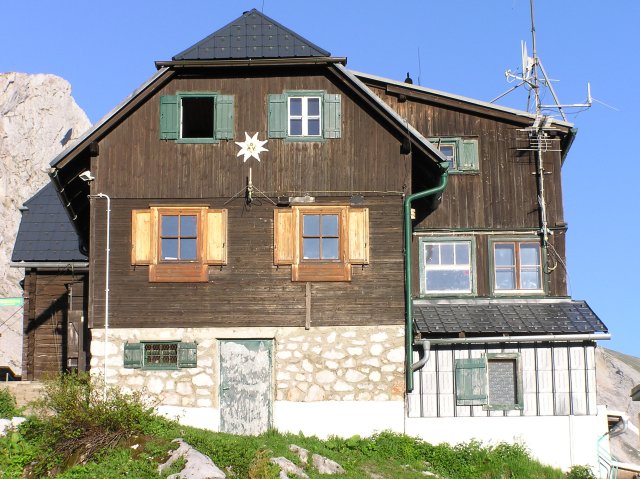
Voisthaler Huette in morning light ...
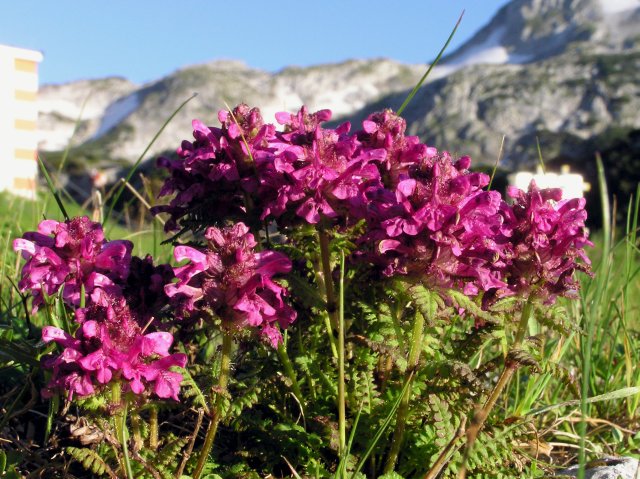
Lots of Quirlblaettriges Laeusekraut (Pedicularis verticillata) near the lodge...

Alpine trefoil (Lotus alpinus)
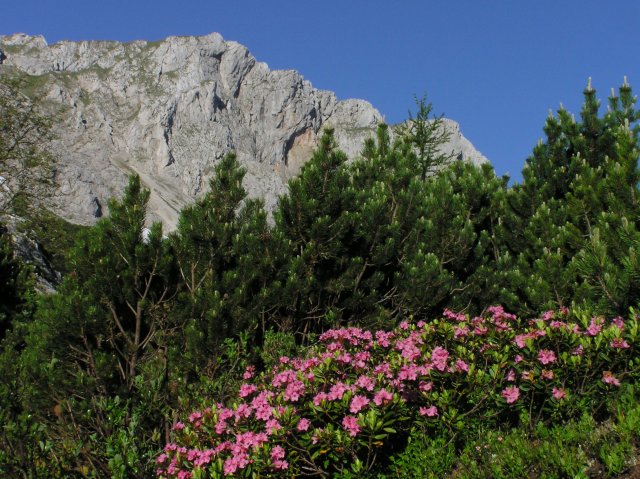
Alpine roses (Rhododendron hirsutum) between mountain pines
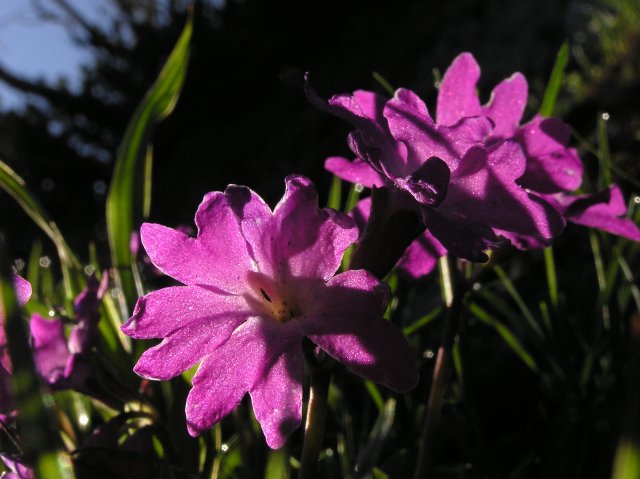
Clusius primroses (Primula Clusiana) in shadow
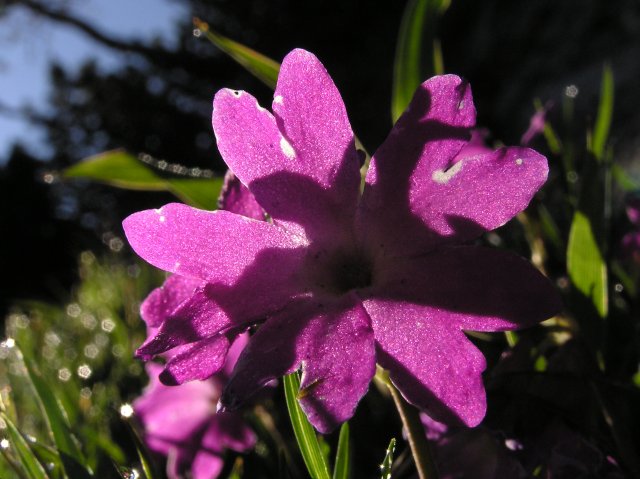
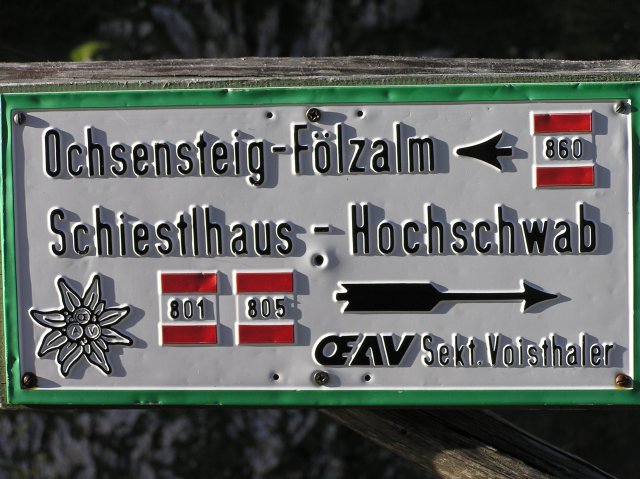
And off we go ...
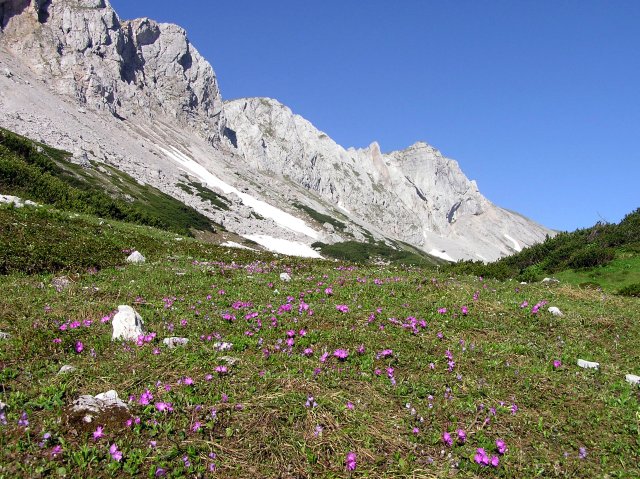
On places where snow has melted just a few weeks ago, Clusius primroses cover big areas ...
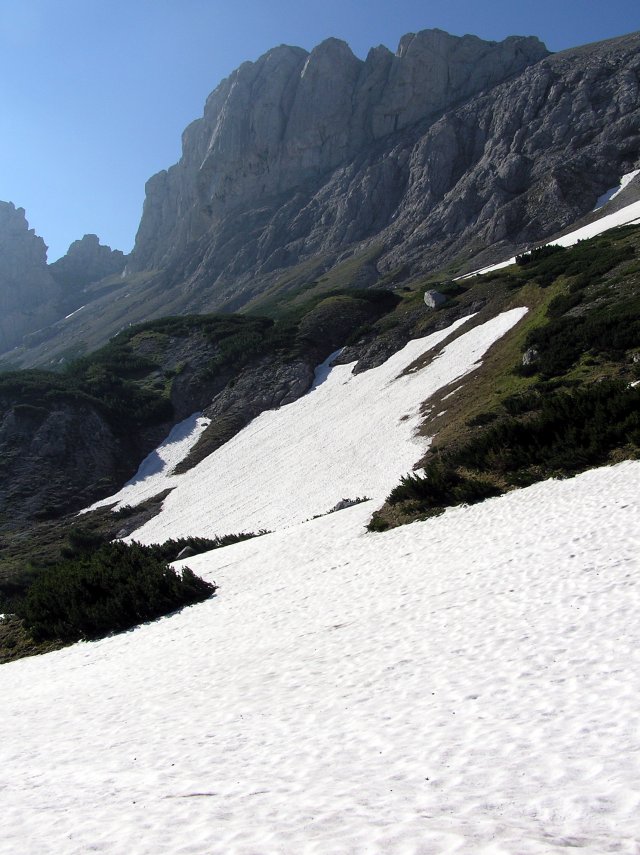
This year there are really lots of snow yet! ...
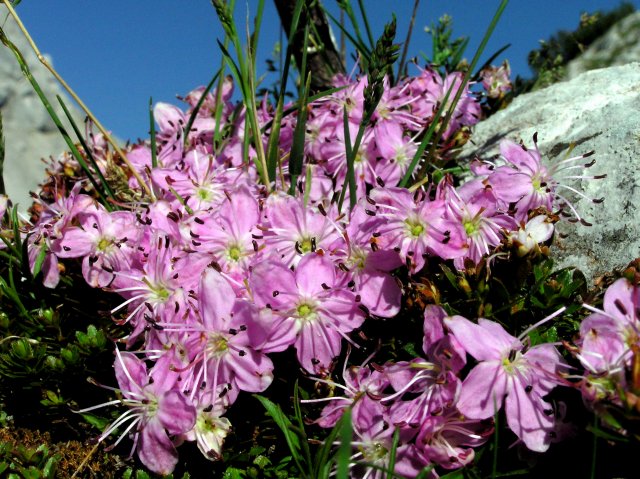
"Tiny" - Alpine roses (Rhodothamnus chamaecistus)
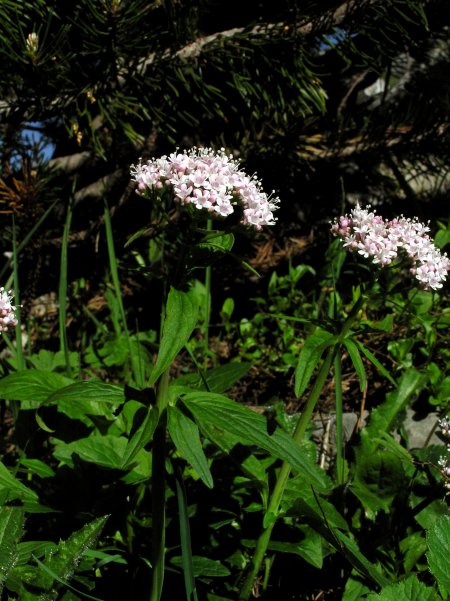
Mountain valerian (Valeriana montana)
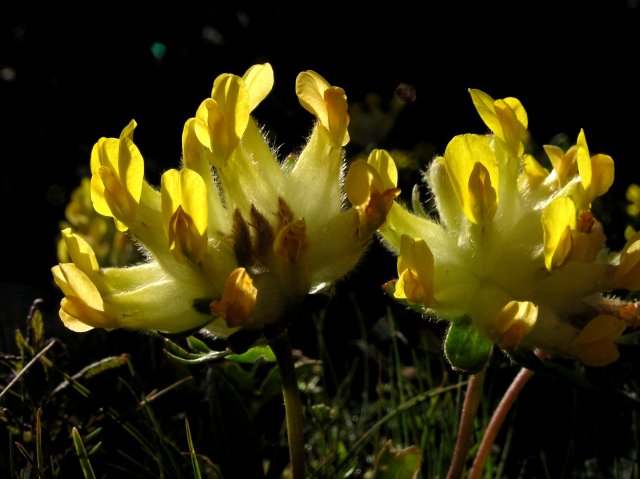
Alpine kidney-vetch (Anthyllis vulneraria subsp. alpestris)
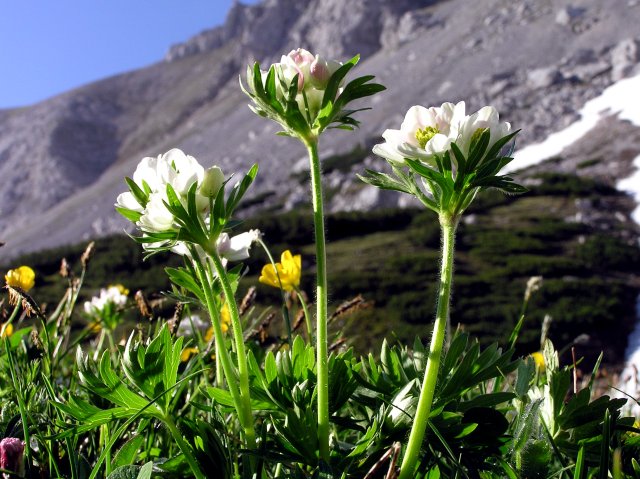
Narzissenblütiges Windröschen ("daffodill - like" anemone - Anemone narcissiflora)
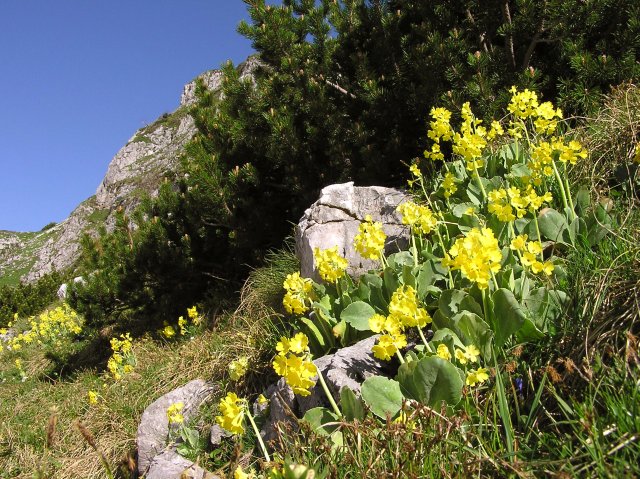
On a small area lots of "auricular" primroses are growing (Primula auricula) ...
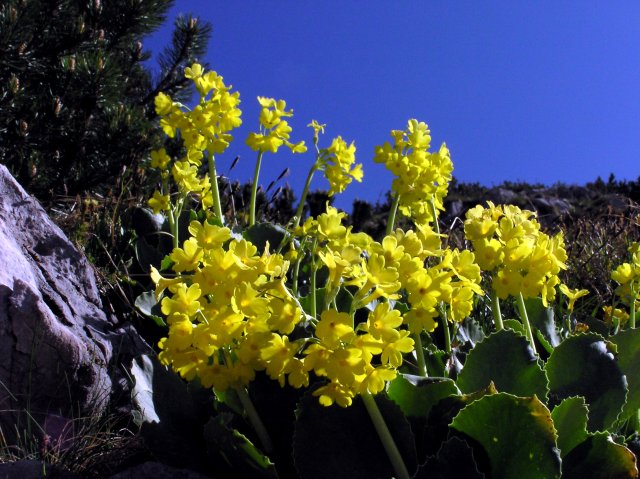
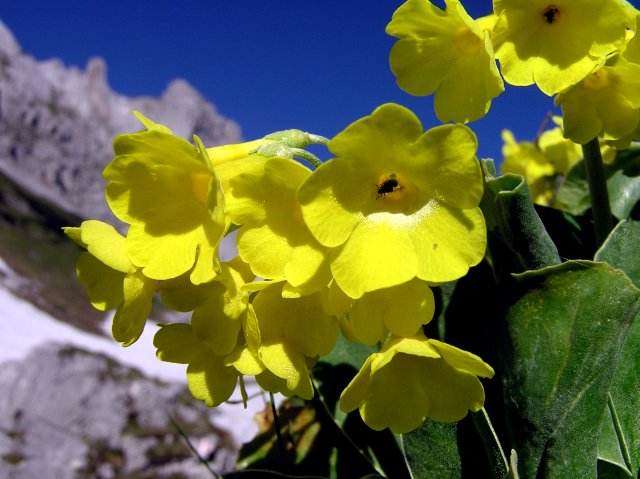
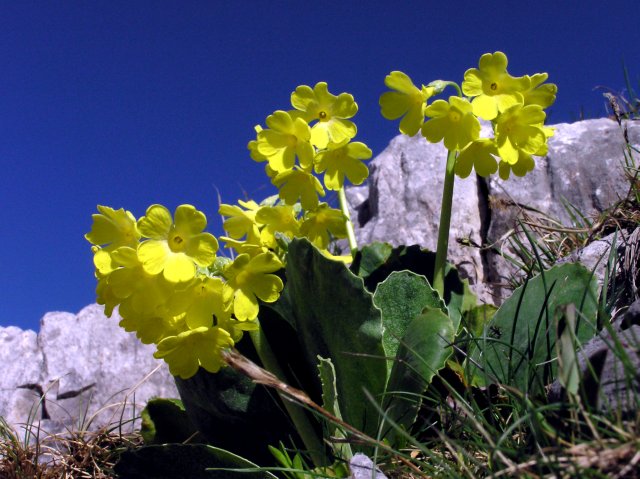
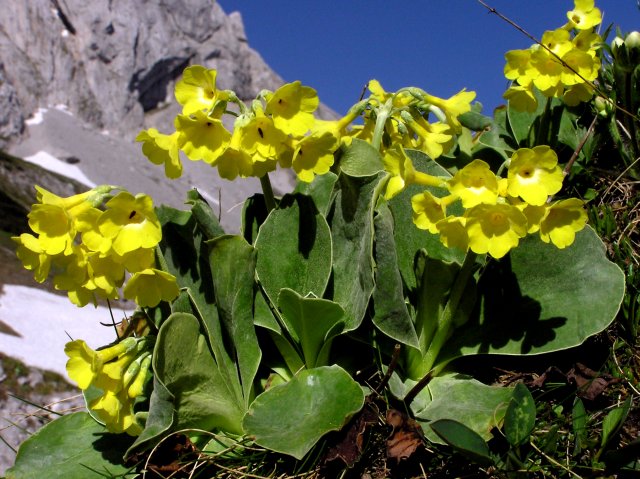
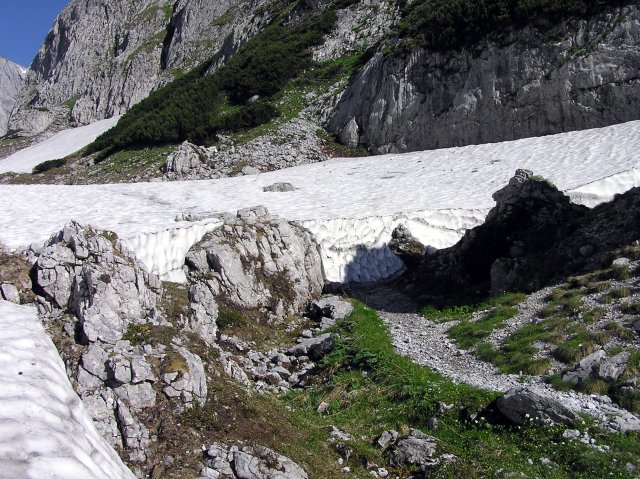
At some places snow more than a metre high bars the path.
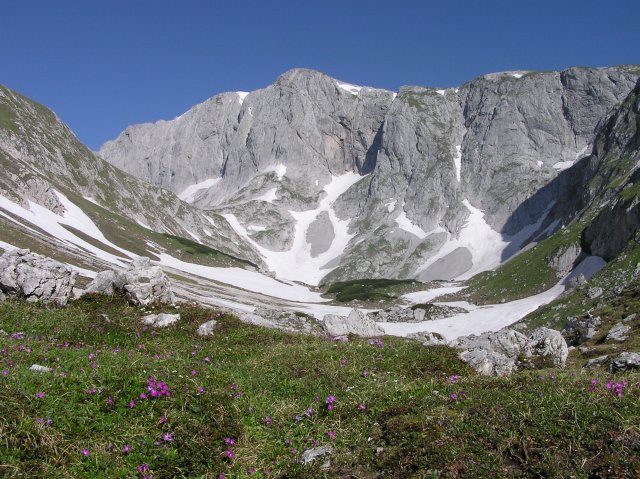
In the end of the valley: View to Hochschwab summit with the southern wall
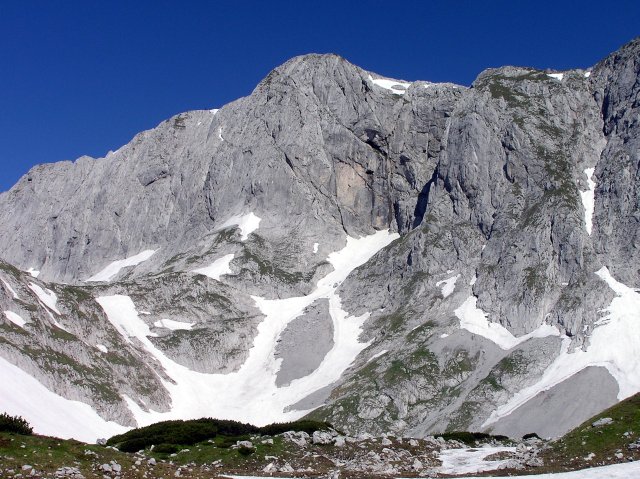
Zooming in on Hochschwab
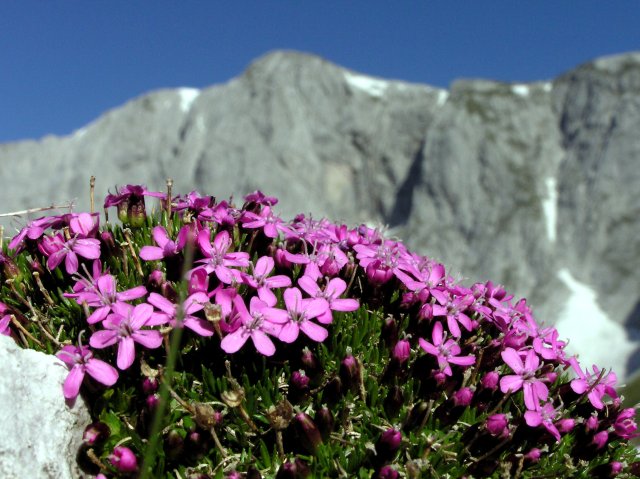
Stengelloses Leimkraut - Campion (Silene acaulis)
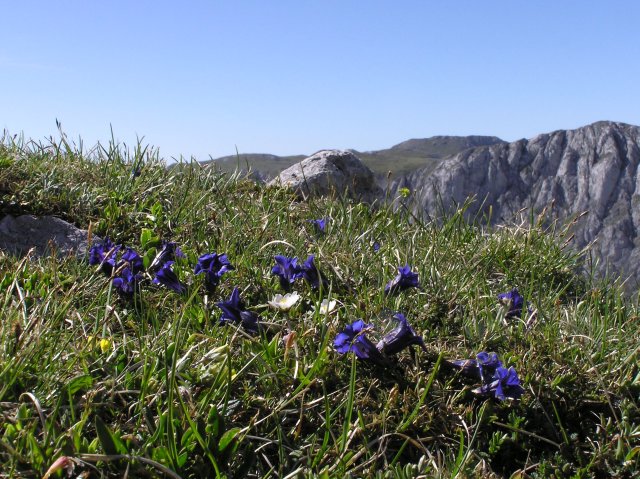
Now we enter the elevated plateau. Here we are awaited by carpets of flourishing "big floured" Gentian (Gentiana clusii)
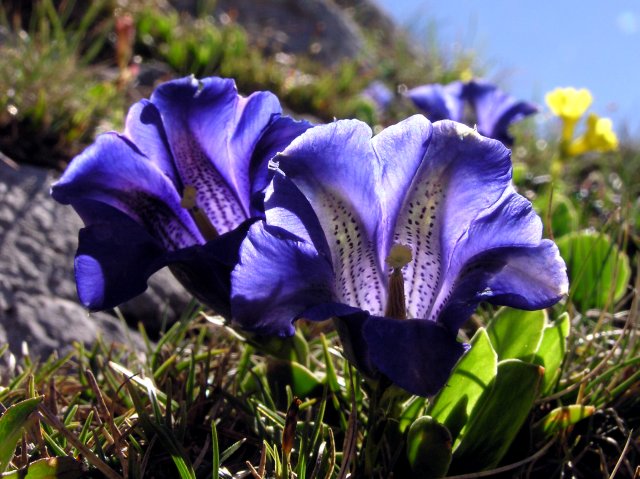
View in southern direction to Karlmauer, Ringmauer and Karlhochkogel (2.096 m). Click into the picture for a large version
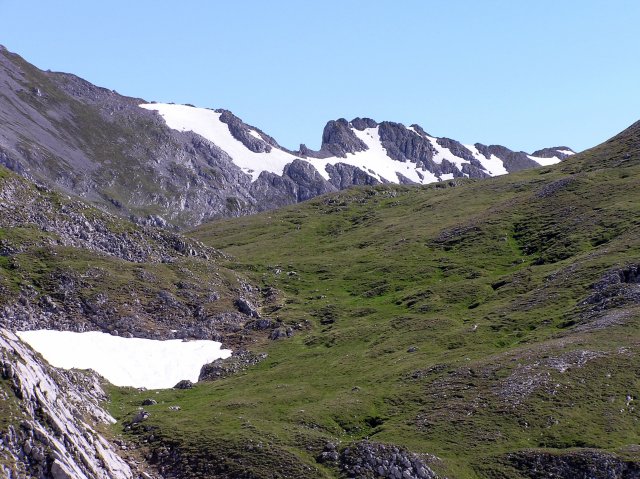
View in direction east to Aflenzer Staritzen
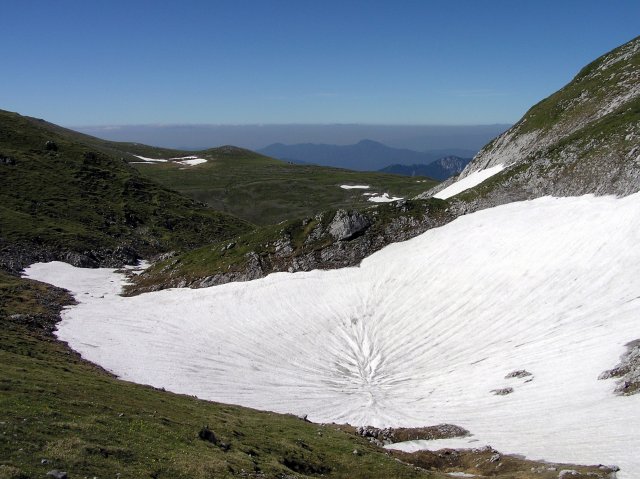
Snow filled doline sink, viewing in western direction
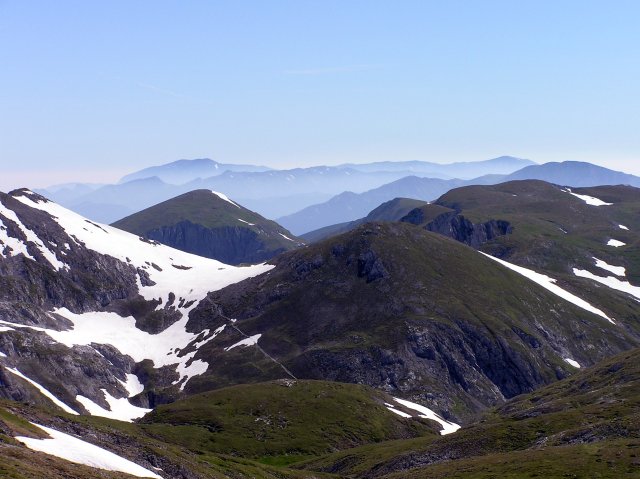
From a bit higher the view to eastern direction: Aflenzer Staritzen in front, in the background (from left to right): Schneeberg (2.075 m), before it Schneealpe (1.903 m), to the right on the horizon Rax (2.009 m), before it Veitschalpe (1.981 m).
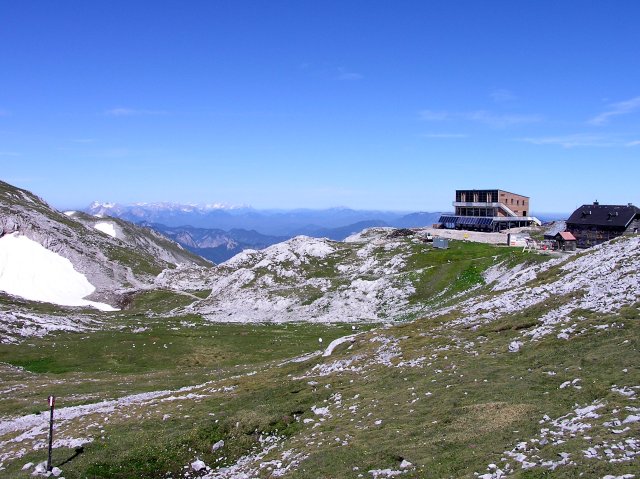
In the uppermost regions of Hochschwab: Schiestlhaus (2.154 m) with the old house more than 120 years old and the new one that is going to be opened in September 2005, a hypermodern house planned as energetic passive - house (nearly all energy needed is drawn from the environment).
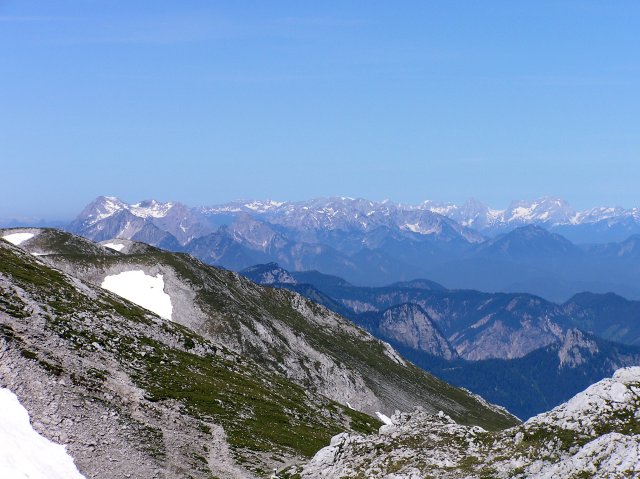
Already here a perfect view to the northern Gesaeuse mountains and to Totes Gebirge.
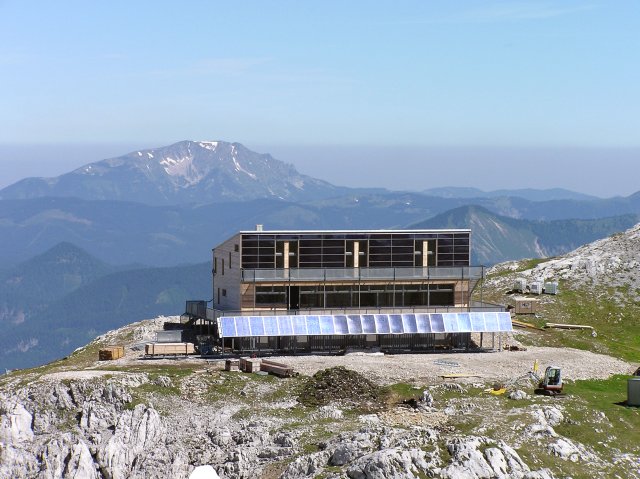
The new Schiestlhaus has its complete electric energy supply from solar panels, water supply from big cisterns, warm water and room heating is done by big solar collectors comprising nearly the complete southern wall. A sophisticated artificial ventilation is combined with heat recovery from exhaust air to fresh air. Maximal heat insulation is provided by a thick wooden wall construction, with K - values of 0,130 (walls) and 0,113 (ceiling), providing energy saving. The lodge being supplied only by helicopter, a self-sustaining energy supply is of big advantage.
In the background Oetscher (1.893 m)
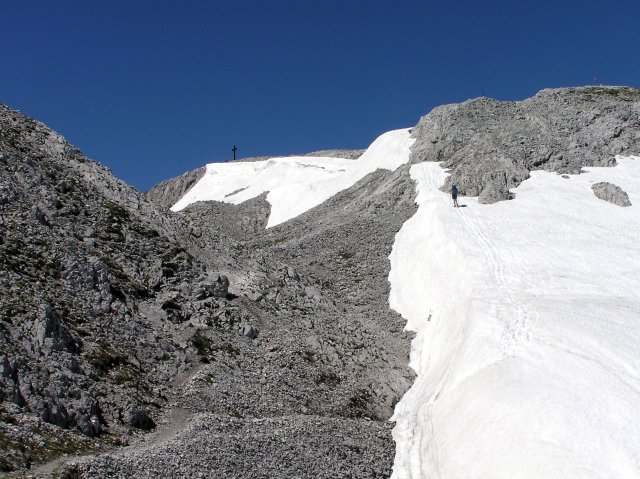
Now the summit is not far yet.
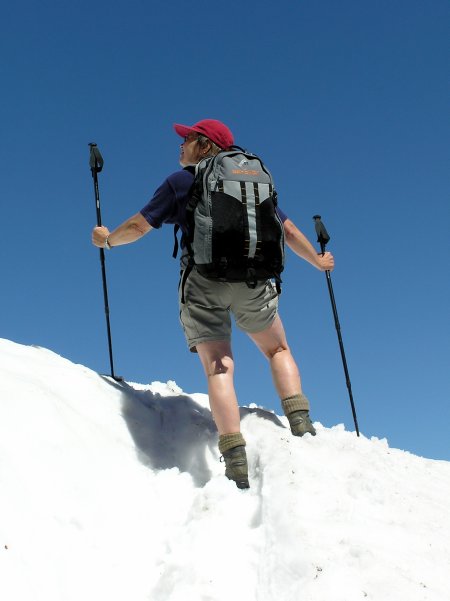
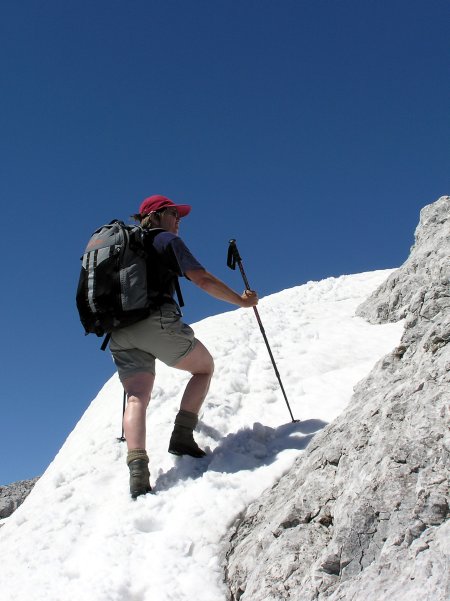
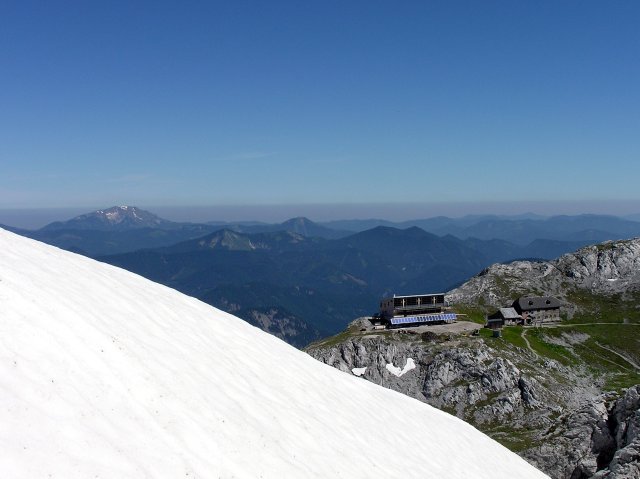
Once more Schiestlhaus and Oetscher
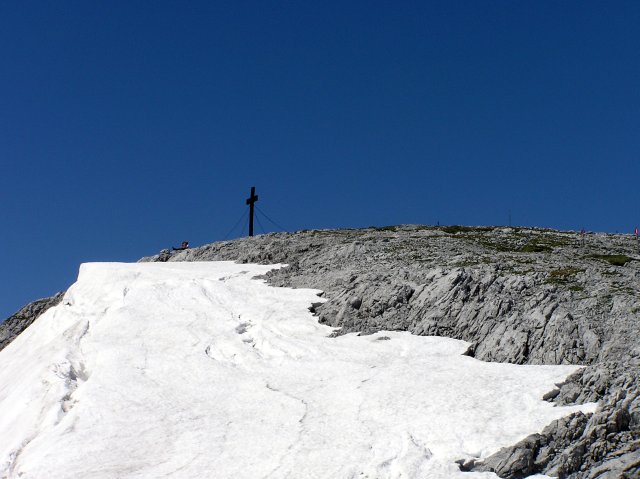
Shortly below the summit of Hochschwab (2.277 m)
Panorama from the summit of Hochschwab (2.277 m). Click into the picture for a large version
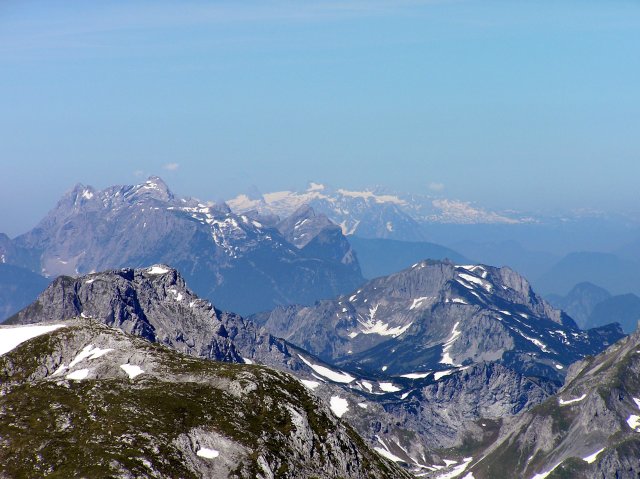
Southern Gesaeuse with Hochtor (2.369 m) and Planspitze (2.117 m); snow-covered Dachstein massive (2.995 m) in background. In the foreground Ebenstein (2.123 m) and Griesstein (2.023 m)
Part of the panorama (made with zoom) from the summit to the west: southern Gesaeuse, Dachstein, Enns valley, northern Gesaeuse with Großer Buchstein (2.224 m), furthermore Totes Gebirge ("dead mountains") with highest summits Spitzmauer (2.446 m) and Groszer Priel (2.515 m)
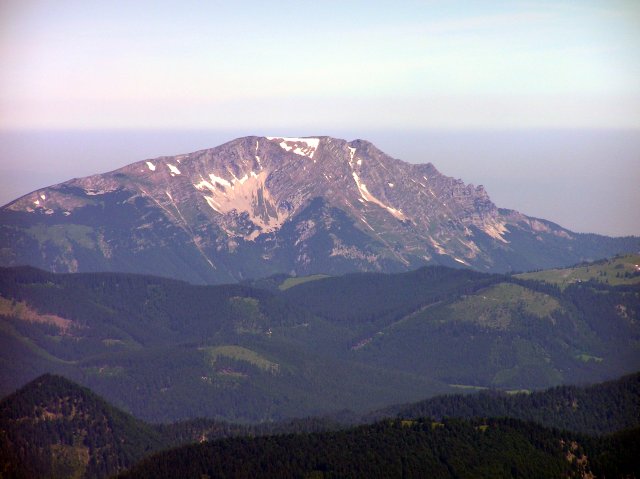
Zooming in on Oetscher (1.893 m)
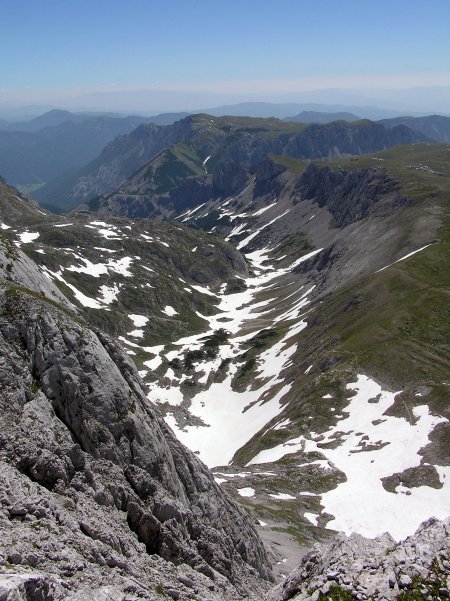
View back down the southern wall to the valley and Voisthaler Huette, where we have come from
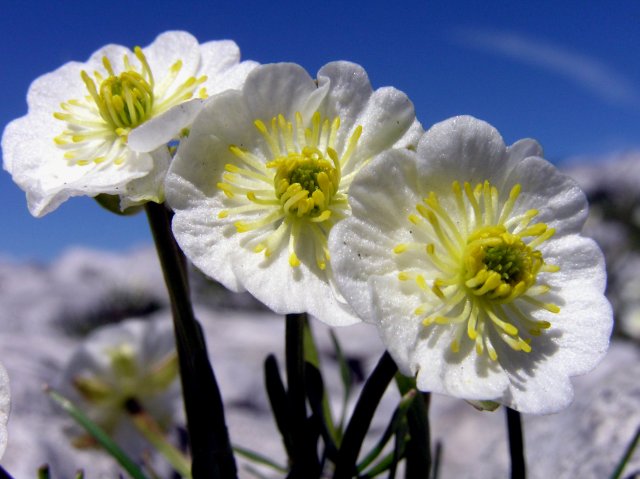
Alpine anemone (Ranunculus alpestris) on the summit
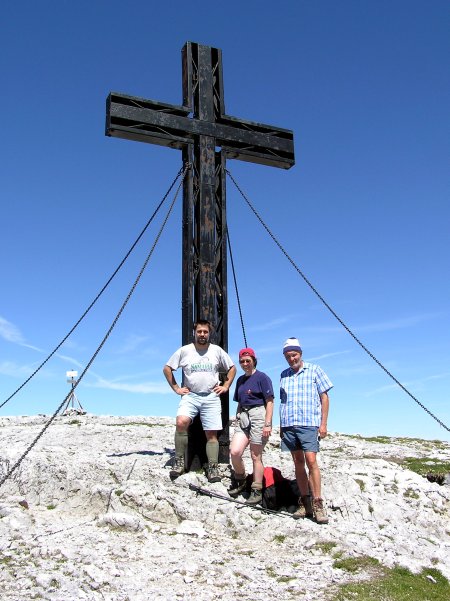
Under the summit cross, from left to right: me, my Sister Heidi and Franz Körner
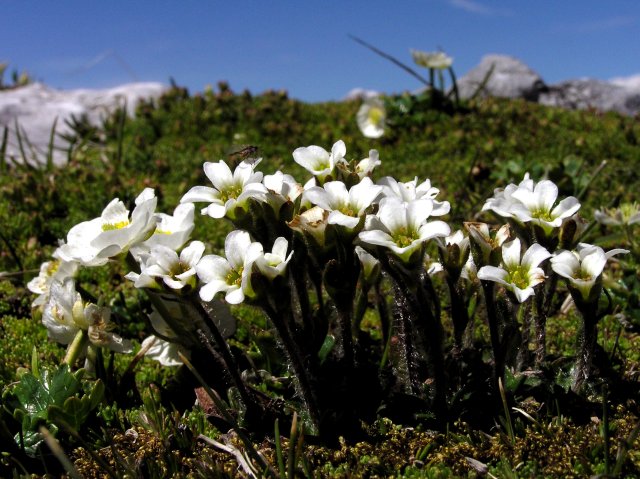
Stitchwort (Minuartia rupestris)
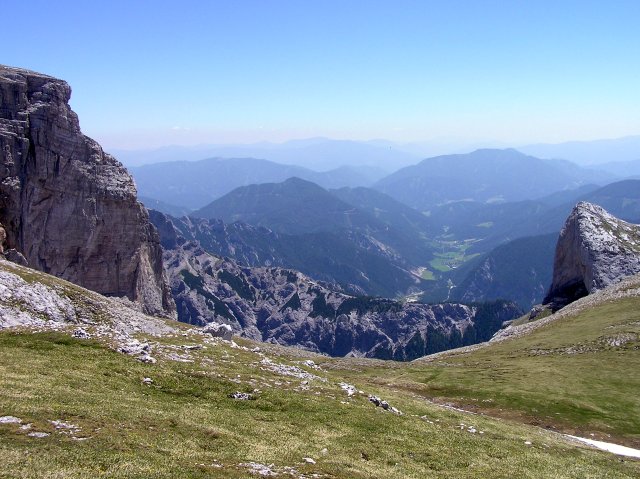
The walk further leads us above sharp ridges, grassland, snow fields, near steep escarpments and snow filled doline sinks, further down to an incredible flowerage of mountain early summer. Beilstein (2.015 m) and Zinken (1.926 m) are framing the view to the valley of Saint Ilgen
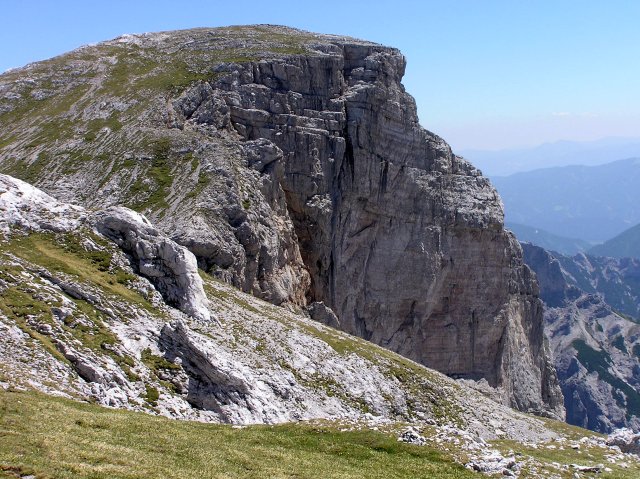
Beilstein
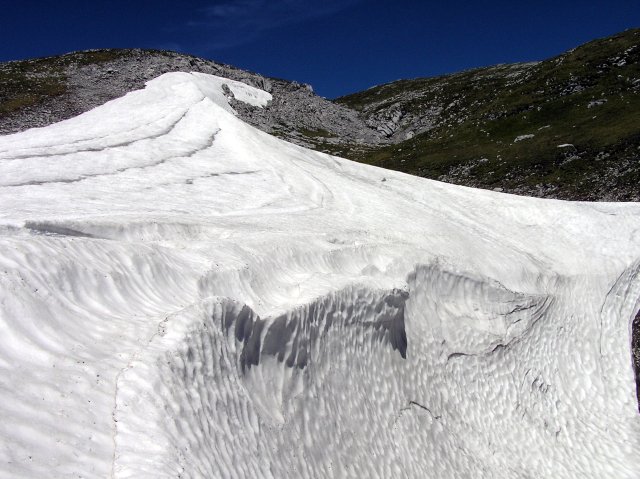
A nearly complete snow filled, about 20 m deep doline sink. Interesting ...
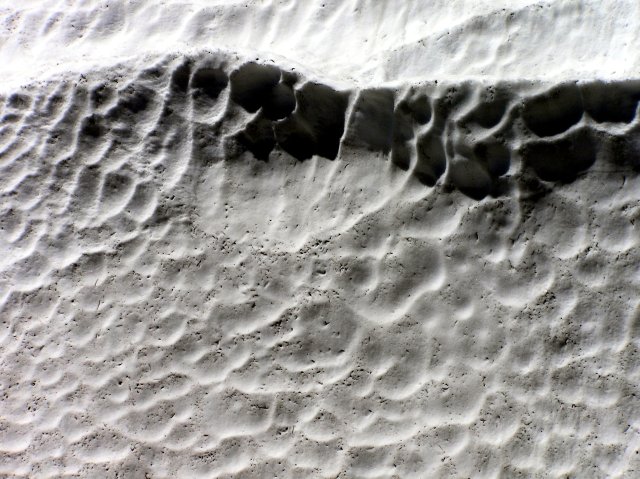
... striation of the vertical snow escarpment
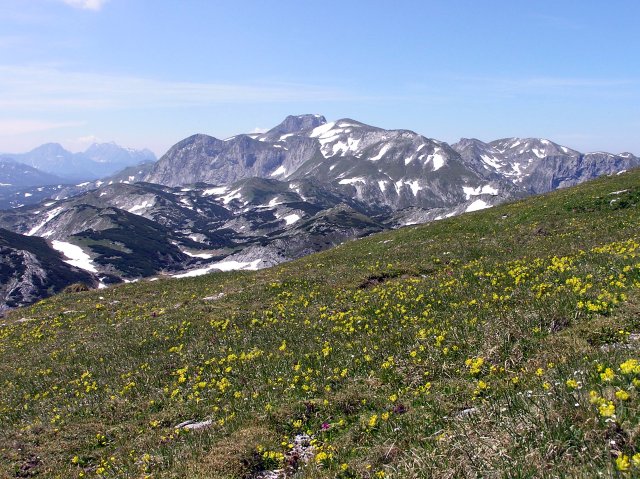
View over flowered meadows to Ebenstein, to the left behind southern Gesaeuse
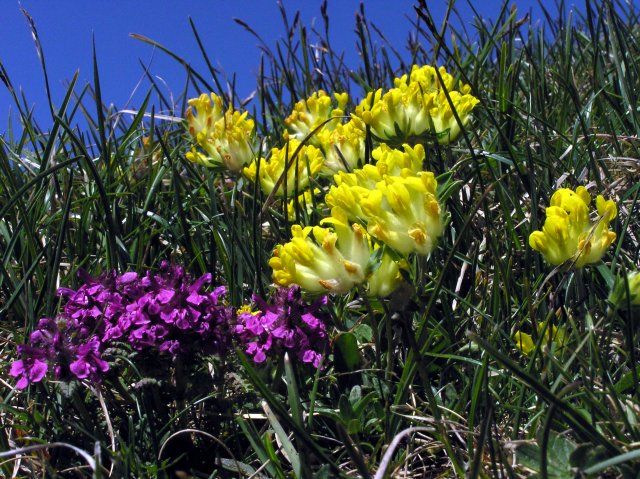
Quirlblaettriges Laeusekraut (Pedicularis verticillata) and Alpine kidney-vetch
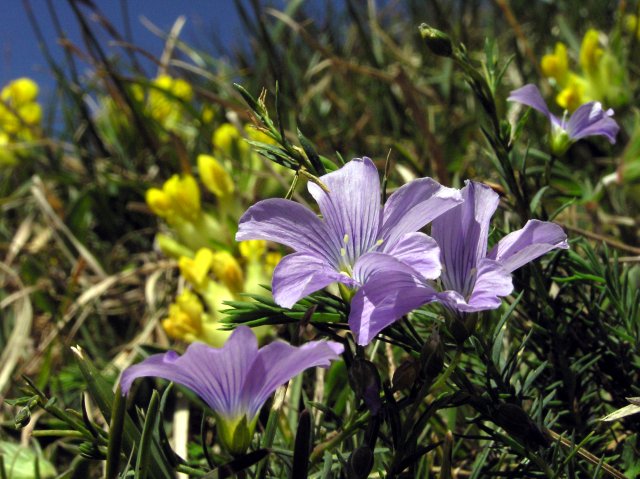
Alpine flax (Linum alpinum)
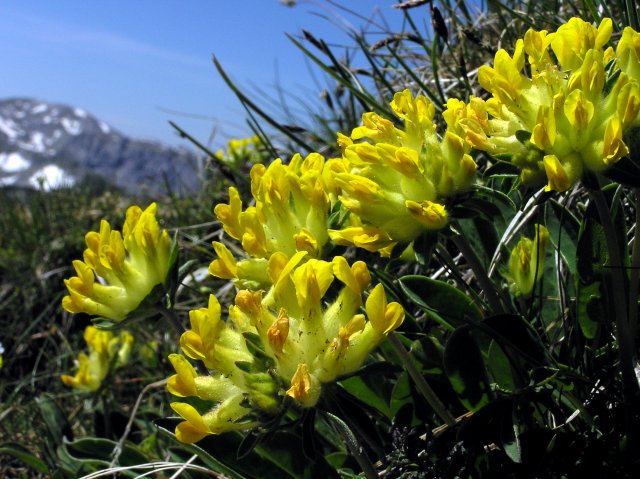
Kidney-vetch
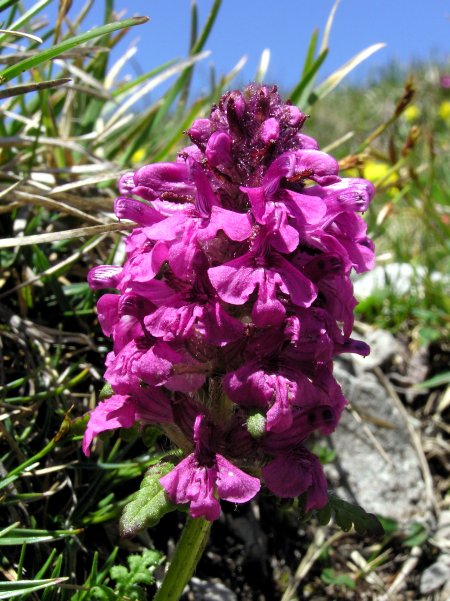
Quirlblaettriges Laeusekraut (Pedicularis verticillata)
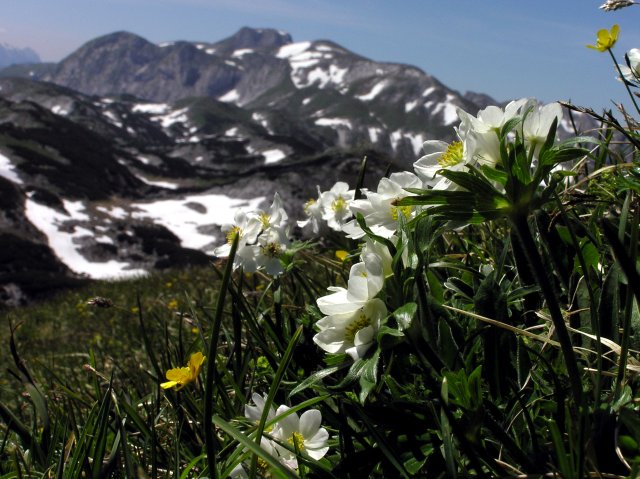
Narzissenblütiges Windröschen ("daffodill - like" anemone - Anemone narcissiflora) with the view to Ebenstein
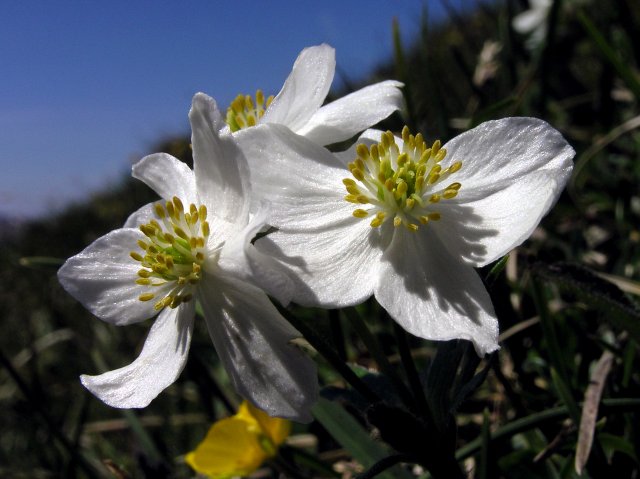
Narzissenblütiges Windröschen ("daffodill - like" anemone - Anemone narcissiflora)
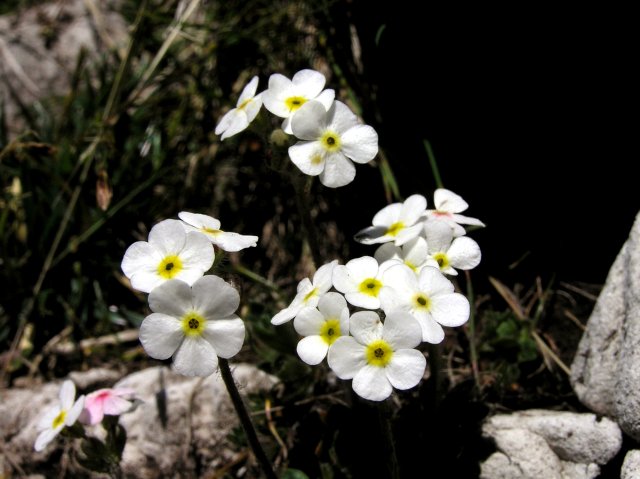
Zwerg - Mannsschild (Androsace chamaejasme)
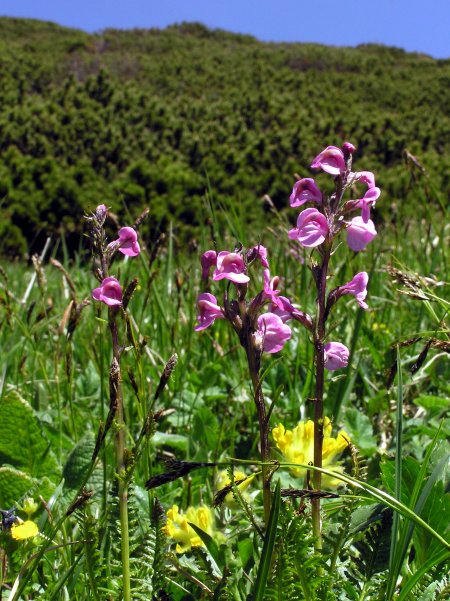
Geschnaebeltes Laeusekraut (Pedicularis rostratocapitata)
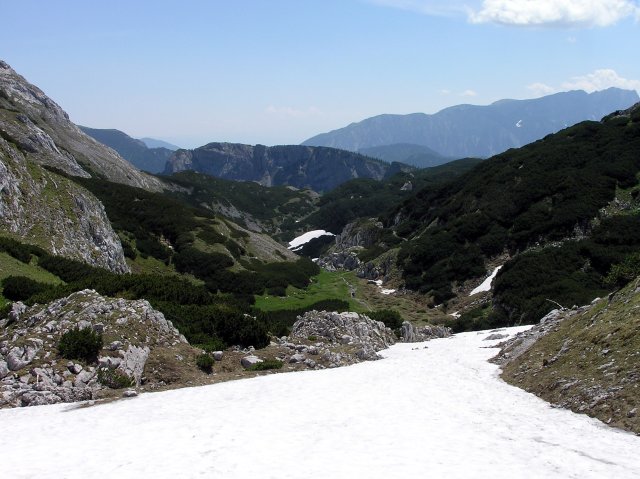
The path now leads through snow filled gullies in the area of mountain pines. Here it is very hot now.
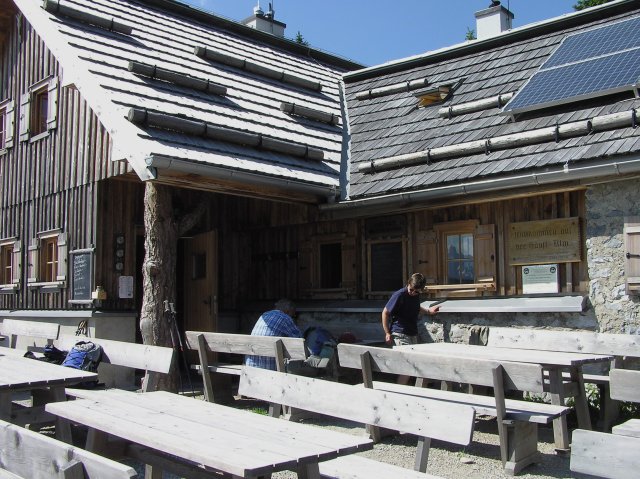
Haeuslalm at least ... here we treat ourselves to a longer break.
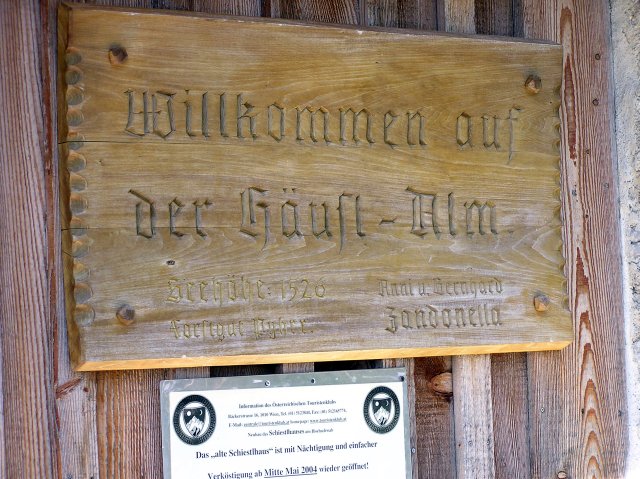
"Welcome to Haeusl Alm, 1.526 m"
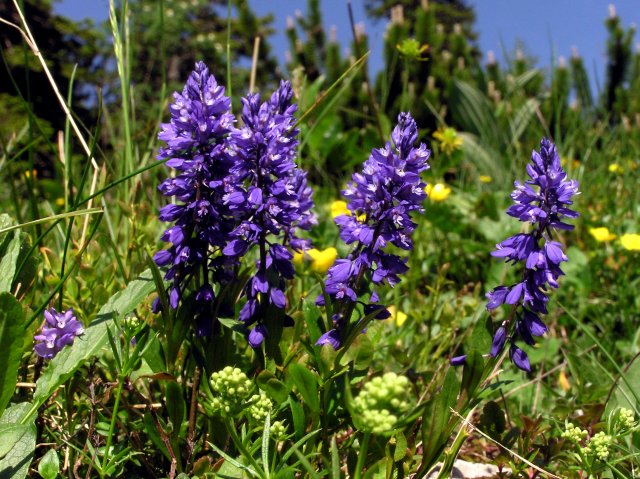
Alpine milkwort (Polygala alpina)
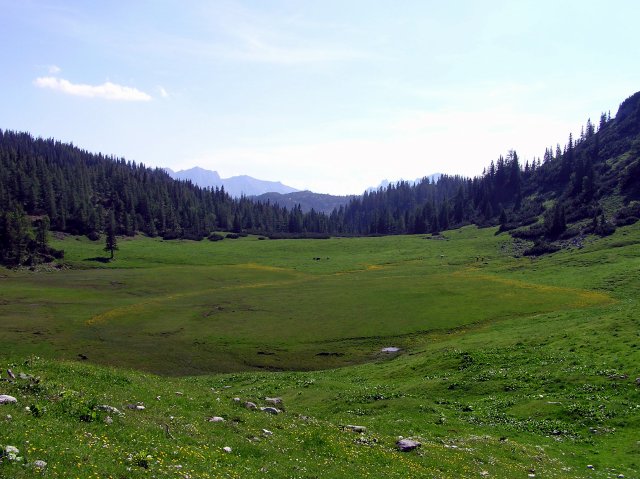
Fairy tale - meadow on Sackwiesenalm
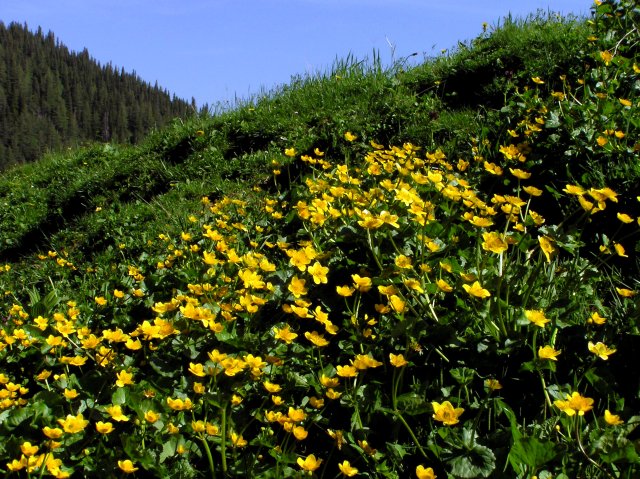
From now on we are accompanied by millions of king cups (Caltha palustris), growing here on wet places everywhere
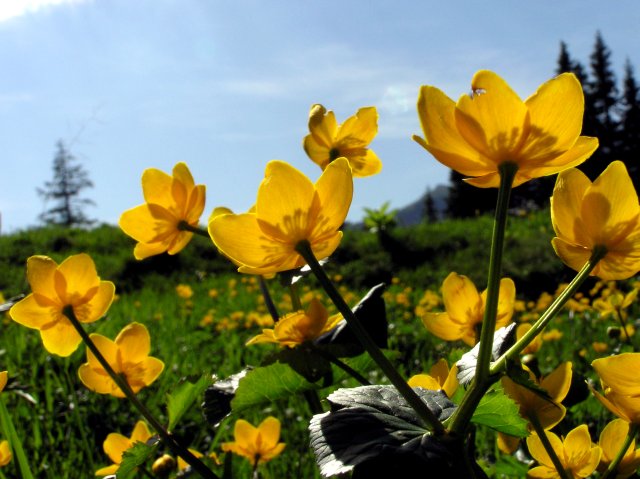
Sackwiesen tarn, embedded in between meadows and woodland beneath the rocks of Seemauer. The yellow areas on the left side shore are millions of king cups ! Click into the picture for a large version.
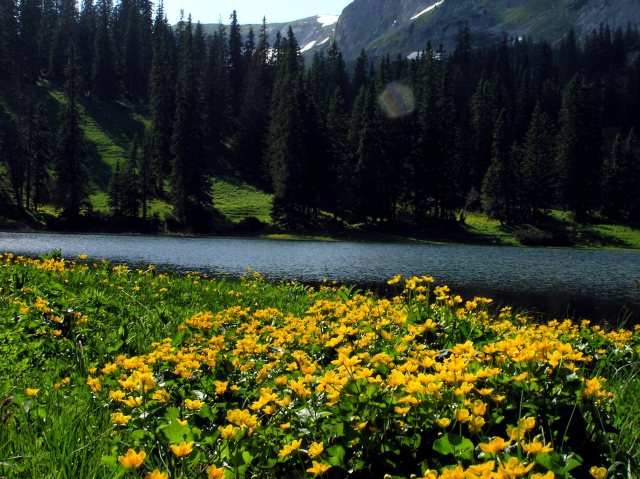
We have to take a much closer look to the king cups ...
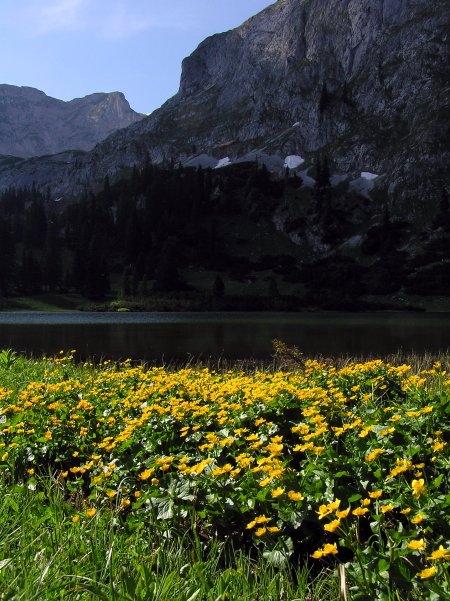

View back from the shore, up the slope
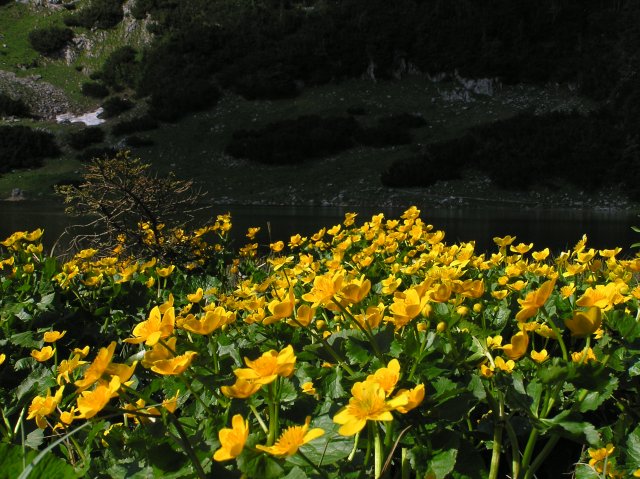
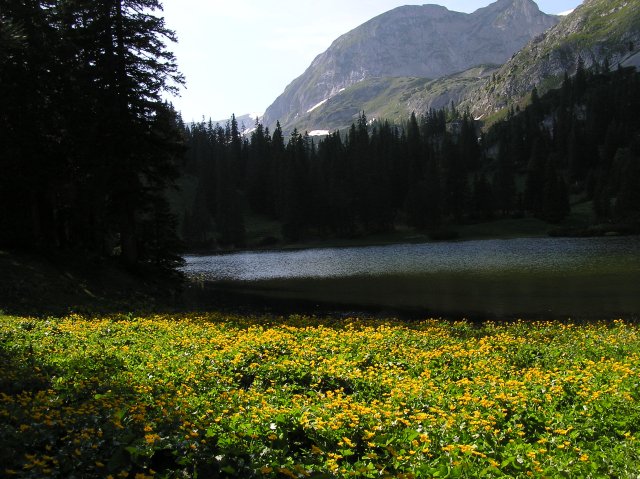
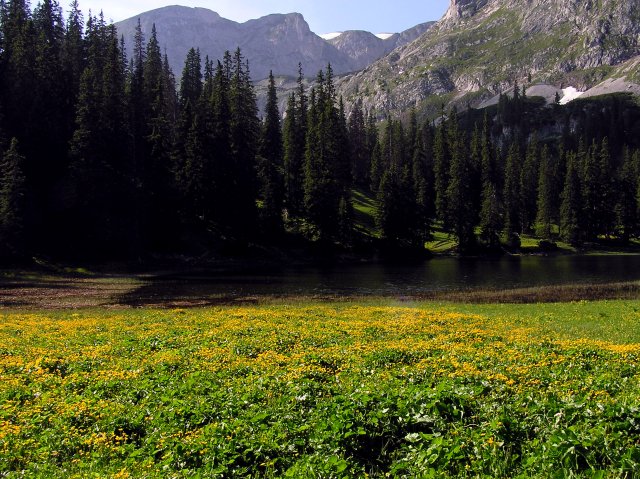
The western end of the tarn ...
... and this time as panorama. Click into the picture for a large version
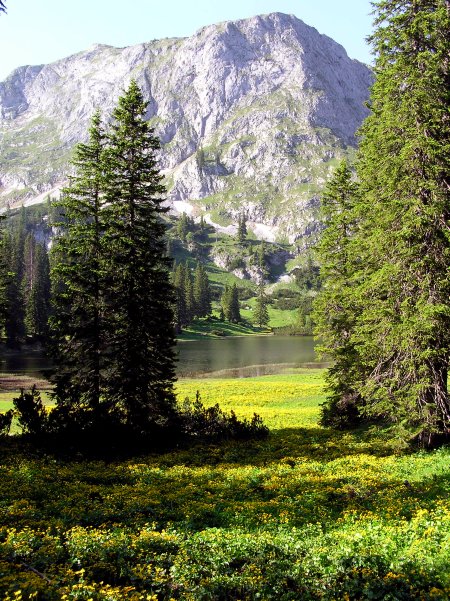
Sackwiesen tarn (western end) and Seemauer
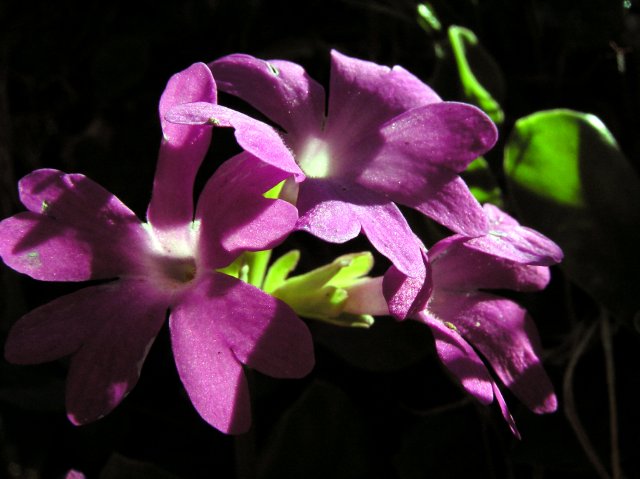
The last half hour the path leads up and down through mountan pasture ground and forest. Repeatedly there are big areas of Clusius primroses.
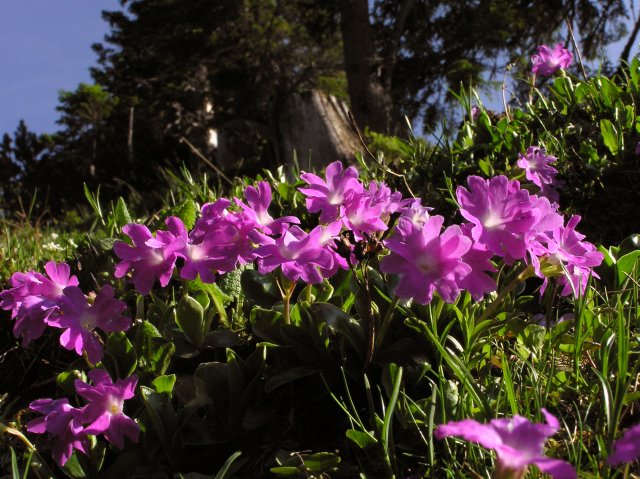
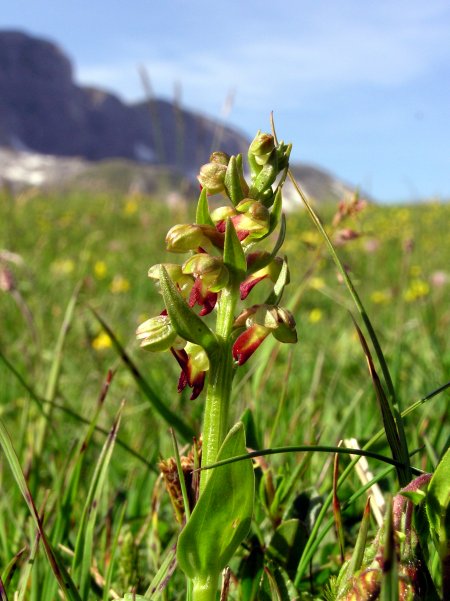
At least Sonnschienhuette is in sight. On the pasture before grüne Hohlzunge (Coeloglossum viride)
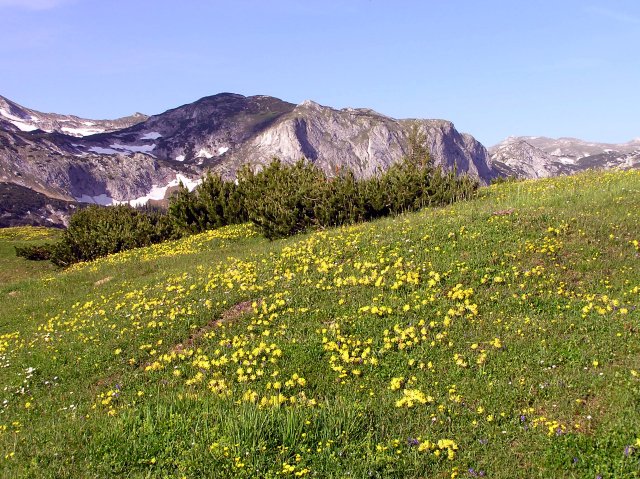
View back over meadows full with alpine kidney-vetch to Seemauer and Hochschwab summit (far right), where we have come from
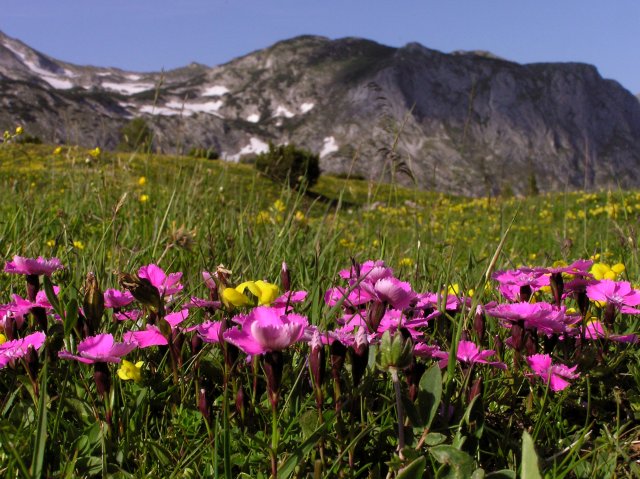
Alpine carnation (Dianthus alpinus)
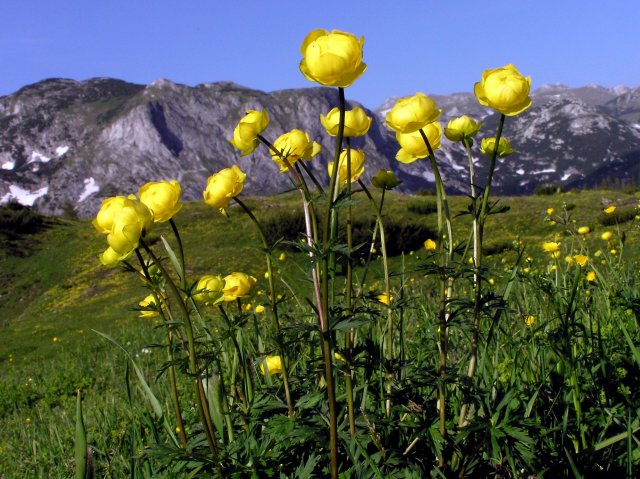
Globe flowers (Trollius europaeus) on Sonnschienalm
At least it is 6 p.m., and we are really glad to have reached Sonnschienhuette (1.530 m).